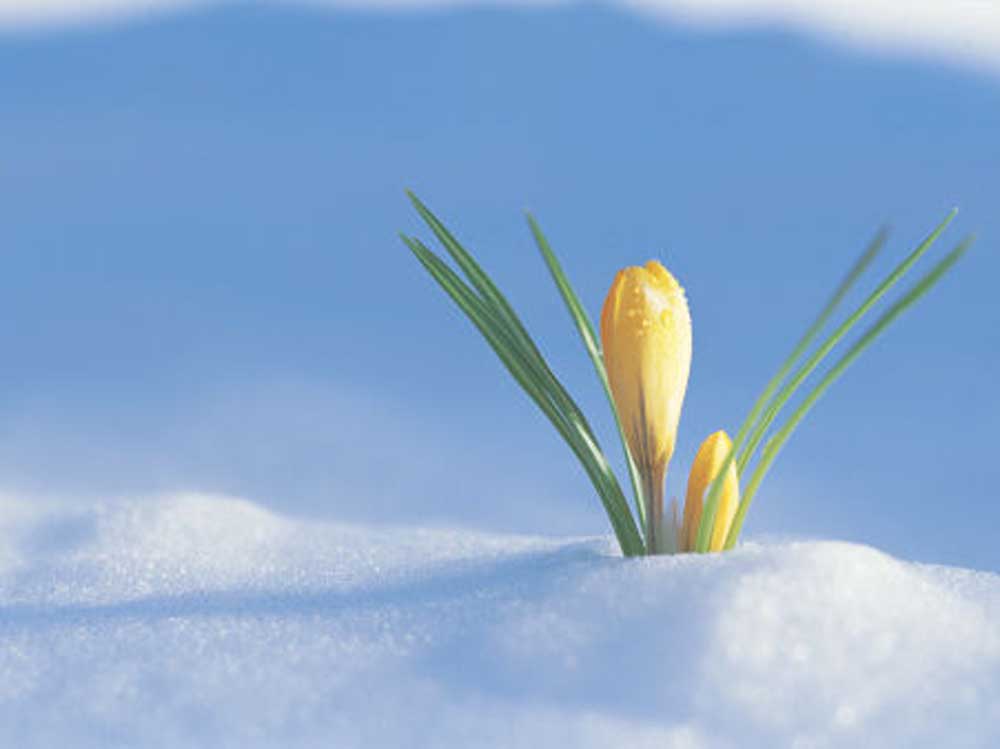Snow cover can be good for plants
Published 6:30 am Tuesday, February 7, 2017

- Flowers growing through snow. (Thinkstock)
There is no doubt that opinions (and language) have varied on the desirability of the amount of snow we have received thus far this year.
Most everyone can’t help but think of the hazards related to accumulated snowfall. Some cars have been “redesigned.” Retail sales may have slipped, as have patrons trying to get from here to there on the slippery surfaces. Some roofs didn’t need any help from the Three Little Pigs huffing and puffing.
Snow has an upside. As gardeners, farmers, firefighters and water watchers, we look at snow a little differently, and usually somewhat positively, but admittedly tiring. The big plus is that snow cover acts as an excellent insulator of the soil.
Snow cover keeps the soil from freezing deeper and deeper, helping to prevent root damage. One of the biggest problems for landscape materials in Central Oregon during the winter is plant desiccation (loss of water). With the amount of snow we have had, it will lessen the impact of the loss of moisture, plus lessen the damage due to wind burn.
Without insulation, the water in plant cells is more likely to freeze, damaging cell walls. Frost-damaged plants are easy to spot; their growth becomes limp, blackened or takes on a translucent appearance. Evergreens turn brown. Frost problems are often exaggerated where plants face the morning sun, since this causes them to defrost too quickly, rupturing their cell walls. Snow cover mitigates these problems.
The insulation effect of snow also helps protect perennials, bulbs, ground covers and strawberry plantings from alternating freezing and thawing cycles. Think about our usual false spring in late February or early March. Without snow, milder temperatures and the sun could warm the soil surface, leading to damage from soil heaving, which can break roots and dry out plant parts.
Snow has often been called “the poor man’s fertilizer,” especially by the farmers who plowed their fields one more time before winter set in. As the snow falls, a small amount of atmospheric nitrogen and sulfur are attached to the snowflakes and sleet particles. When the snow melts, it releases that nitrogen into the cracks and crevices of the plowed soil.
I confess my backyard landscape never looked so beautiful in January. Everything was so sparkly and pristine that my enjoyment made me feel guilty thinking how hard it had become for the wildlife to find a food source. The snow accentuated the shape of the bird bath, the garden bench and the three cottonwood stumps left at varying heights this fall when it was evident that the trees had to come down.
There are a few drawbacks to snow. The heavy snow can damage trees and shrubs as the weight accumulates on branches. I tried to carefully knock off the snow on the branches of a juniper that I could reach, but that proved to be a dangerous balancing act atop of the snowbank and decided in the end to let nature take control.
The deer have stripped many of the juniper branches so they look pretty naked, and the inclination is to get out on a sunny day and remove them. The best thing is not to do any clean up of any winter-injured material until new growth begins on live wood, usually in late spring. Then it will be easier to determine whether the branches are actually dead and prune accordingly.
Check for snow mold
Before pruning or pulling out a shrub check for signs of life. Scrape the bark away with a fingernail or make a small cut with a pocketknife. A branch that is totally dead will be brown and may look water soaked. A live branch will show bright green or white just under the bark.
Snow mold is a fungal disease that appears in early spring as the snow melts. There are two types of snow molds, gray and speckled that become active under the snow cover.
According to the Pacific Northwest Plant Disease Management Handbook, Gray Snow Mold needs 60-plus days of snow cover and Speckled Snow Mold needs less than 60 days of snow cover. The fungi survive the hot dry summer months as sclerotia (a compact mass of hardened mycelium stored with food reserves). In fall, they germinate under cool moist conditions. Snow cover will predispose plants to attack by these fungi and the disease is worse the longer snow is on the ground. This is especially true for grass cut high and for short-cut golf course turf such as greens and tees.
After snow recedes, the disease appears as 3- to 6-inch roughly circular, water-soaked spots turning yellow to yellow-brown. Under prolonged snow, spots are larger, white to gray-white and covered with a fluffy white to gray mass of mold.
When the lawn has dried out in the spring, use a flexible rake to gently lift the grass in the affected area so it can dry out, then apply a spring fertilizer, which would be higher in nitrogen.
Snow can be both friend and foe. Is the glass half empty or half full? I think of spring with hopes of seeing an abundance of wild flowers. I think of how the Forest Service is hoping that our forests are able to fend off disastrous fires; and I think of our increased water resources and I am thankful.
— Reporter: douville@bendbroadband.com






